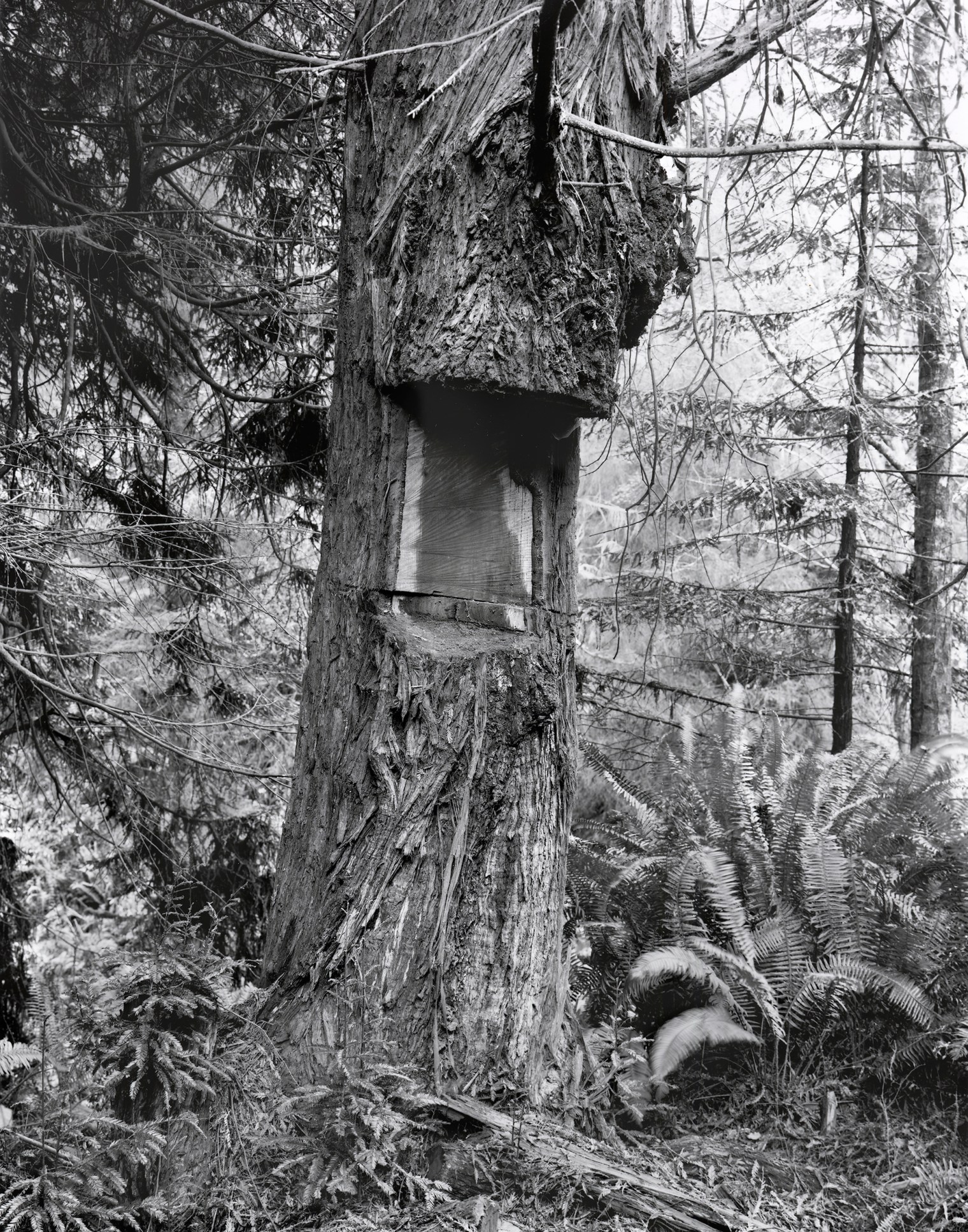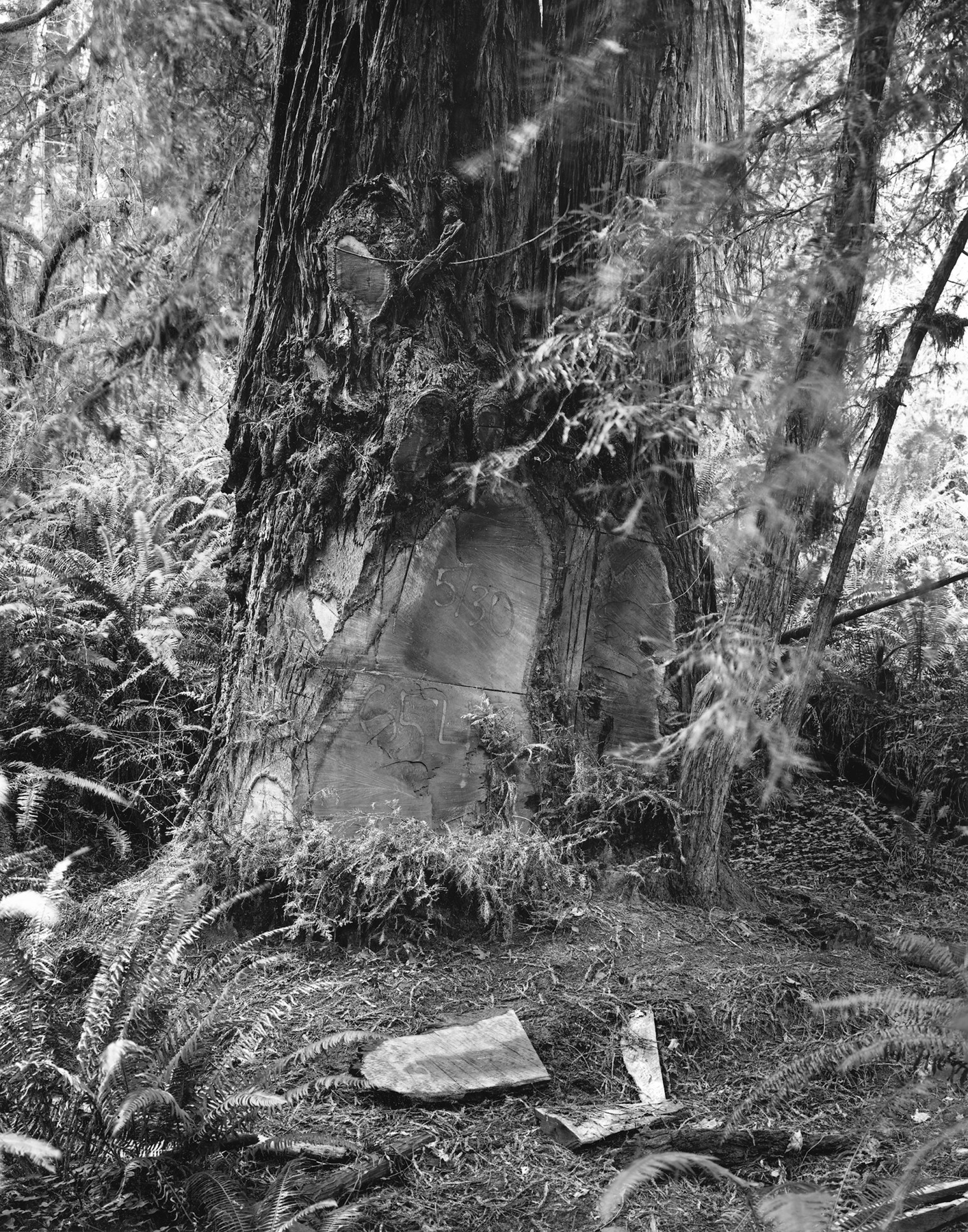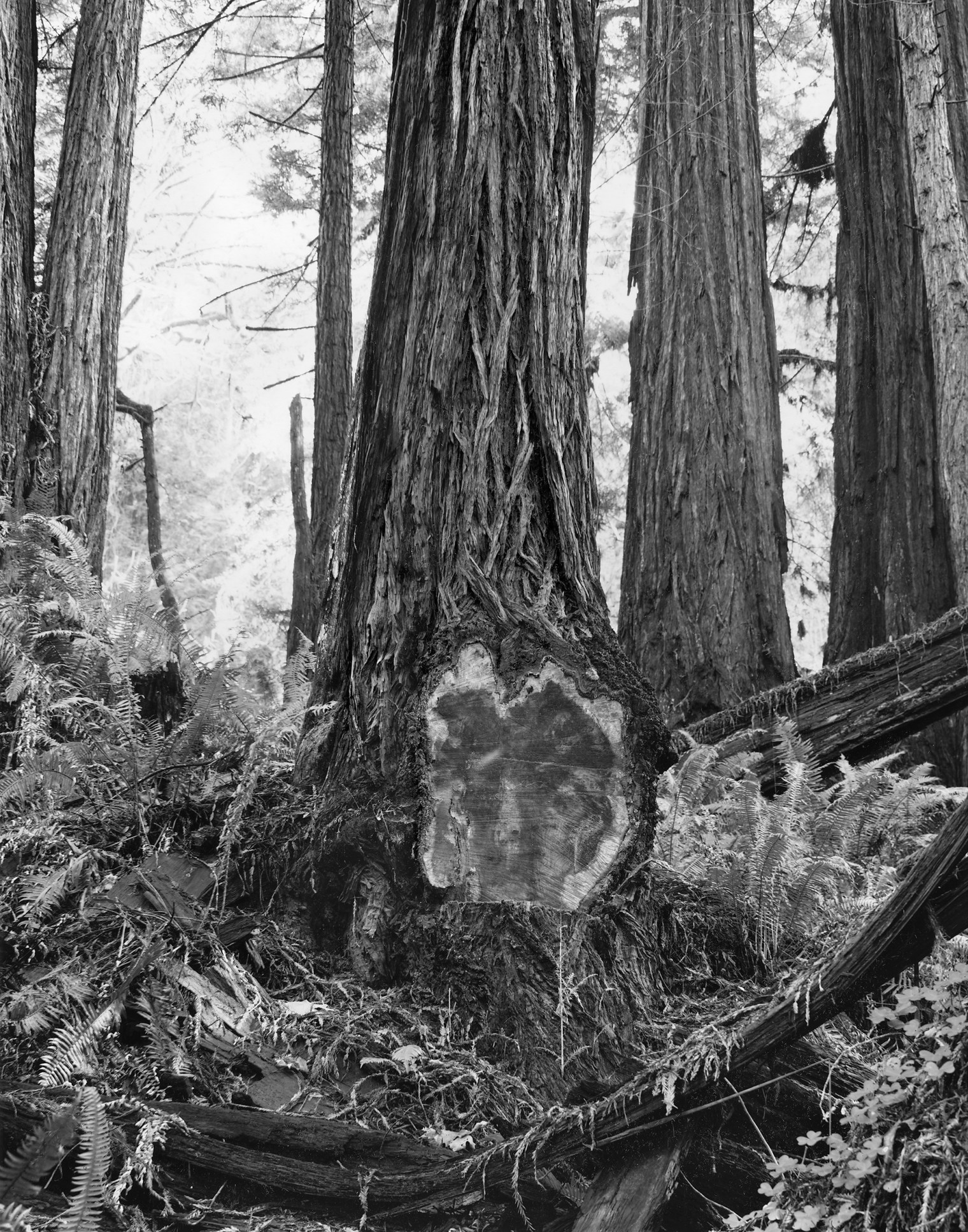The ‘Senseless Maiming’
of the Redwoods

Redwood Highway. Kirk Crippens & Gretchen LeMaistre/Schilt Publishing
Poachers are killing America’s tallest trees
Photographs by KIRK CRIPPENS and GRETCHEN LEMAISTRE
Text by BRYAN WALSH
The biggest of northern California’s giant redwood trees grow more than 250 ft. tall, with a circumference greater than 90 ft. at their base. The oldest have seen more than 3,000 years. These majestic trees have been here long before us, and if left undisturbed, would still be growing after everyone on the planet was dead.
But they have been disturbed. Years of logging have left less than 5 percent of the old-growth coastal redwood trees standing, most of them in the protected Redwood National and State Parks. Logging was banned decades ago, but in recent years the redwoods have been faced with a new threat. Under the cover of night, poachers sneak into the parks and shave off the burls at the base of the tree.

Semper Virens.

Heartwood.
A knotty growth of bark, the burls are filled with unspotted bud tissue—should a redwood tree fall, a burl can sprout a new tree. The burls, which fetch thousands of dollars on the black market, contain the DNA of the tree, a genetic line that can date back thousands of years. Removing the burl can kill the tree and end that line.
You can see the result of that senseless maiming in Kirk Crippens and Gretchen LeMaistre’s new photography book Live Burls, released by Schilt Publishing. Beginning in 2013, the San Francisco-based photographers began working to document the burl poaching. Rangers would show them the locations of trees that had been targeted, often far from the hiking trails and roads of the redwood park, and Crippens and LeMaistre would return again and again, searching for the right light, the right angle, to capture these scarred but magnificent trees.
“These trees are very much under threat,” says Crippens. “It’s an open question whether future generations will have them to enjoy.”

Crescent City.

Skunk Cabbage.
Live Burls is a work of ecological witness. Each 8 x 10 black and white print frames the base of the tree, centering on absence—the live burl, the memory of the redwood, hacked away. Sometimes cleanly, as if the poachers had taken the time to whittle away their prize, and sometimes almost desperately. The poachers are locals who know the forest and their quarry, which makes it that much harder for rangers to defend the tens of thousands of acres of parkland. “The poachers know where to go, and they know where to escape,” says Crippens.
Live Burls is also a work of art. Crippens and LeMaistre include a quote from John Steinbeck, a northern California native. “The redwoods, once seen, leave a mark or create a vision that stays with you always,” he wrote. “No one has ever successfully painted or photographed a redwood tree.” But Crippens and LeMaistre focus on a single angle of the tree, working slowly and steadily, over a number of years. Shooting in low light, at times almost at night, with eight minute exposures, the result is ghostly but undeniably alive, the photographs a moment of communion with these beautiful and alien creatures.

Lady Bird.

Bald Hill.
“They are so ancient and so slow growing, and we are so tiny and so fast moving,” says Crippens. “Our sense of time is a matter of years, and to photograph something that is two to three thousand years old, older than our country and everything we can imagine, is just impossible.” Yet Crippens and Lemaistre have succeeded in doing just that. We can only hope that their work stands as part of a continuing chronicle of the redwoods, and not as their memorial.

Coastal Drive, Southwest View.
Kirk Crippens and Gretchen LeMaistre are photographers based in San Francisco. Their book, Live Burls, is available now and published by Schilt Publishing.
Bryan Walsh is a contributor to TIME. Previously, he was TIME’s International Editor, its energy and environmental correspondent and was the Tokyo bureau chief in 2006 and 2007.